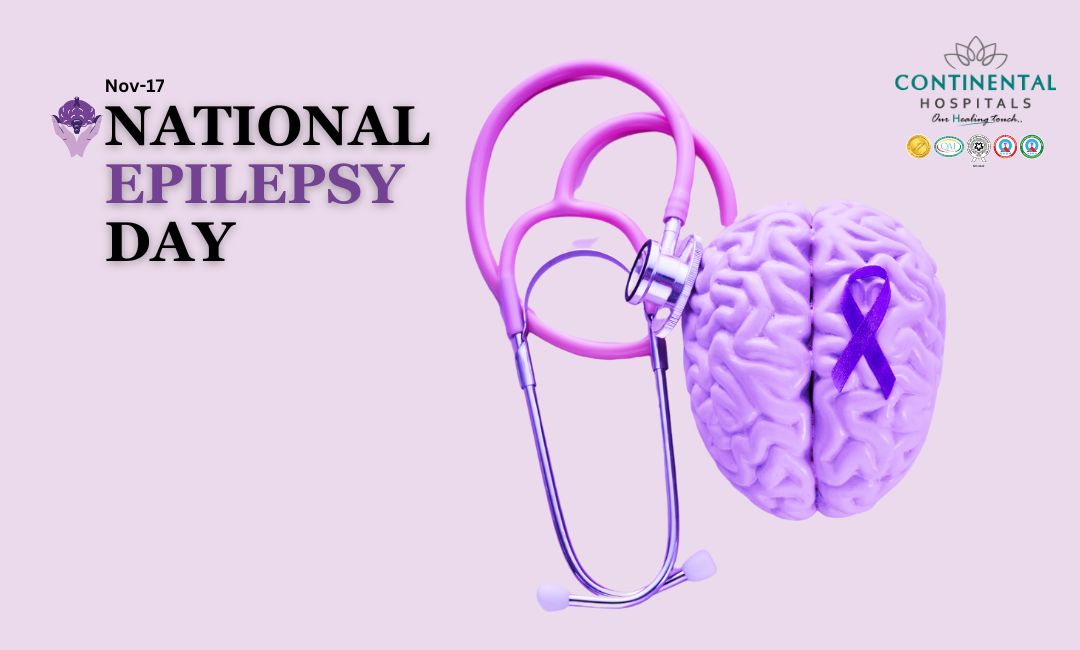National Epilepsy Day is observed each year on November 17th in India, serving as a powerful reminder of the need for greater understanding and awareness of epilepsy, a neurological disorder that affects millions worldwide. The day aims to provide support for people with epilepsy, educate the public, and reduce the stigma associated with the condition. With proper awareness and treatment, epilepsy can often be managed effectively, allowing people to lead fulfilling lives.
In this article, we’ll explore the purpose and history of National Epilepsy Day, highlight the impact of epilepsy on individuals and families, and discuss available treatment options for managing the condition.
Understanding Epilepsy
Epilepsy is a neurological disorder marked by recurrent, unprovoked seizures caused by sudden bursts of electrical activity in the brain. These seizures can vary in type and intensity, from brief lapses in awareness to intense convulsions, and may be accompanied by physical, emotional, or behavioural symptoms. People of all ages, genders, and backgrounds can be affected by epilepsy, and the condition often requires lifelong management.
Epilepsy by the Numbers: Global and Indian Statistics
Epilepsy affects a significant portion of the global population, with some regions showing particularly high rates due to limited access to healthcare and treatment. Here are some key statistics:
🥗 Healthy Plate Challenge
🍽 Add Your Favorite Dish
Pick Your 6 favorite foods, eat, and see the results.Drag & drop foods onto your plate.
Drop Food Here
Global Impact: As of a 2018 study, over 7 crore people worldwide are estimated to be living with epilepsy. This includes people from all age groups, though the prevalence is often higher in low- and middle-income countries.
Indian Context: In India alone, approximately 1.2 crore people are affected by epilepsy. This represents a substantial portion of the global epilepsy burden and highlights the importance of awareness and support in the country.
Prevalence Rate: Globally, the prevalence of epilepsy is estimated at around 5-9 cases per 1,000 people. However, in certain regions, these rates may be even higher.
Disability and Disease Burden: According to the Global Burden of Disease (GBD) analysis from 2010, epilepsy accounts for about 0.7% of the global disease burden. This translates to over 1.7 crore disability-adjusted life years (DALYs) lost each year.
Children in India: Epilepsy is particularly prevalent among children aged 8–12 in India, with a five-year prevalence rate of 22.2 per 1,000 children. This underscores the need for better access to diagnosis, treatment, and support for young individuals and their families.
History of National Epilepsy Day in India
National Epilepsy Day was initiated to shed light on epilepsy and to address the many challenges faced by those living with the condition. Over the years, this day has grown to become a significant event in India, promoted by various health organizations, including the Epilepsy Foundation and other advocacy groups. These organizations work tirelessly to offer support, resources, and education to help people with epilepsy live healthier lives and reduce the stigma surrounding the disorder.
The goal of National Epilepsy Day is not only to raise awareness but also to encourage people to seek timely diagnosis and treatment, educate the public, and create a more inclusive society for individuals with epilepsy.
Purpose of National Epilepsy Day
The primary purpose of National Epilepsy Day is to increase public awareness of epilepsy, a condition often misunderstood and stigmatized. In addition to raising awareness, the day aims to:
Support Patients and Families: Living with epilepsy can be challenging for both the individual and their loved ones. National Epilepsy Day provides a platform to connect people, share experiences, and foster a supportive community.
Educate the Public: Misconceptions about epilepsy can lead to discrimination and exclusion in social, educational, and workplace settings. Through education, National Epilepsy Day works to dispel myths, clarify facts, and encourage empathy toward those affected.
Reduce Stigma: Social stigma is one of the biggest challenges faced by people with epilepsy. By spreading awareness, the event aims to create a more understanding and accepting society that allows people with epilepsy to thrive.
Managing Epilepsy: Treatment Options
Thanks to advances in medical research, epilepsy can often be effectively managed with treatment. Here are some common approaches to managing epilepsy:
Medication: Antiepileptic drugs (AEDs) are the most common form of treatment for epilepsy. These medications help control seizures in about 70% of patients. Once a diagnosis is made, doctors prescribe AEDs based on the type and frequency of seizures. Regular follow-ups are essential to monitor dosage and any potential side effects.
Surgical Intervention: For some people who do not respond to medication, surgical intervention may be an option. Surgery typically involves removing or altering the part of the brain responsible for seizures. However, only a small percentage of people with epilepsy require this type of intervention.
Dietary Therapy: In some cases, dietary changes, such as a ketogenic diet, have shown promising results in reducing seizure frequency, especially in children. A ketogenic diet is high in fats and low in carbohydrates, which can help stabilize brain function in some individuals with epilepsy.
Vagus Nerve Stimulation (VNS): VNS therapy involves implanting a device under the skin that sends electrical impulses to the vagus nerve, helping to reduce seizure activity. This option is generally used when medication alone is not effective.
Lifestyle Modifications: Managing epilepsy often requires certain lifestyle changes, such as avoiding known seizure triggers (like sleep deprivation or stress), wearing medical alert bracelets, and practising safety measures during activities.
Psychological Support: Living with epilepsy can lead to emotional stress, anxiety, and even depression. Support from mental health professionals, along with counseling or joining support groups, can make a positive difference in emotional well-being and quality of life.
Raising Awareness: The Key to a Better Future for People with Epilepsy
Awareness plays a crucial role in improving the lives of those with epilepsy. On National Epilepsy Day, educational campaigns, community events, and discussions are held to inform people about the condition, reduce stigma, and inspire action. Social media platforms and advocacy groups use the day to share patient stories, provide insights, and educate the public about epilepsy’s effects and management strategies.
Increasing awareness can also help bridge the gap in treatment availability, especially in low- and middle-income countries where healthcare access may be limited. By raising awareness, National Epilepsy Day helps build a more informed and compassionate society.
Conclusion: Breaking Down Barriers for Epilepsy Patients
Epilepsy is a manageable condition, and with proper diagnosis, treatment, and support, many individuals with epilepsy lead full and active lives. National Epilepsy Day serves as a powerful reminder of the importance of empathy, awareness, and acceptance for people living with epilepsy. By educating ourselves and others, we can help reduce stigma, support better healthcare access, and improve the lives of people affected by epilepsy.
If you are experiencing symptoms of epilepsy or need assistance managing the condition, don’t hesitate to seek help from our best neurologist.
.webp)














